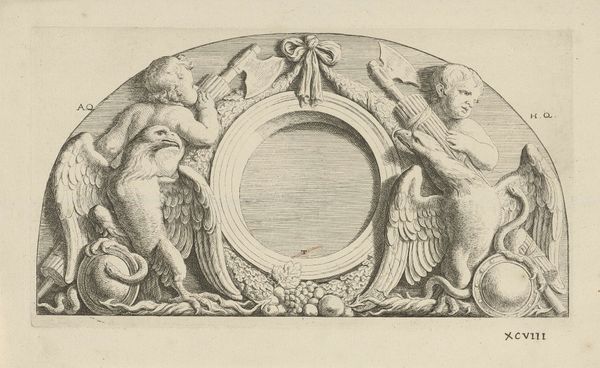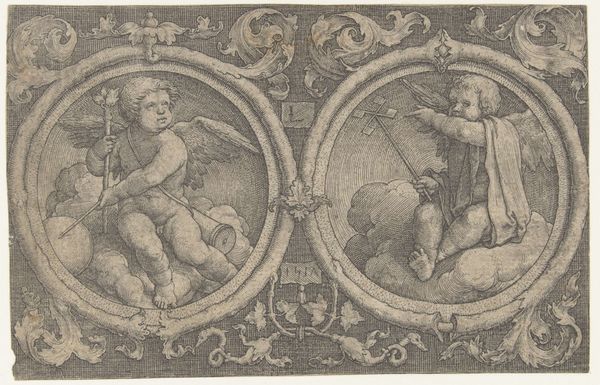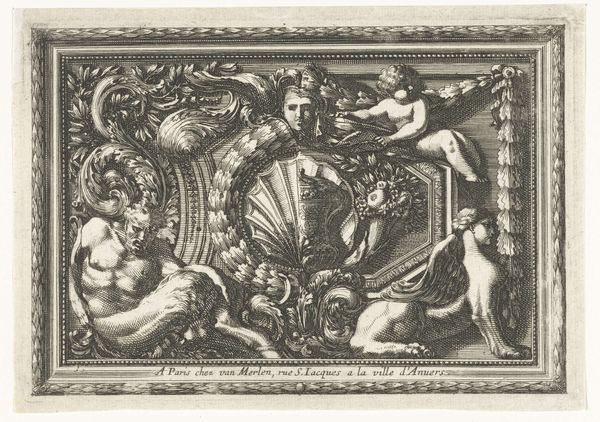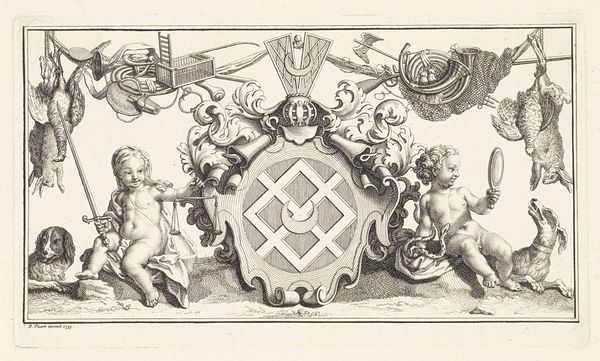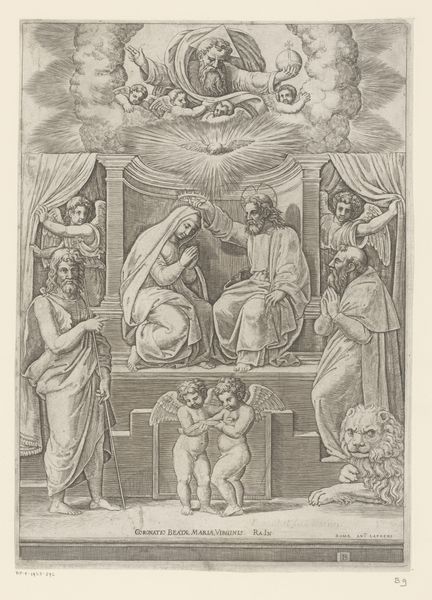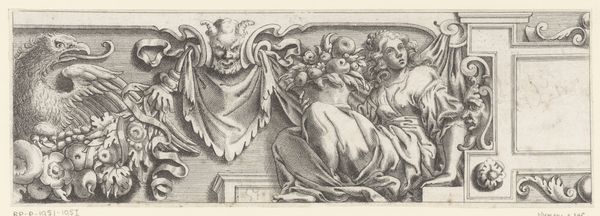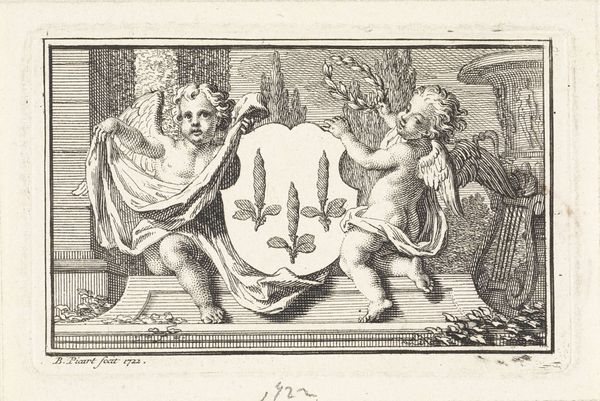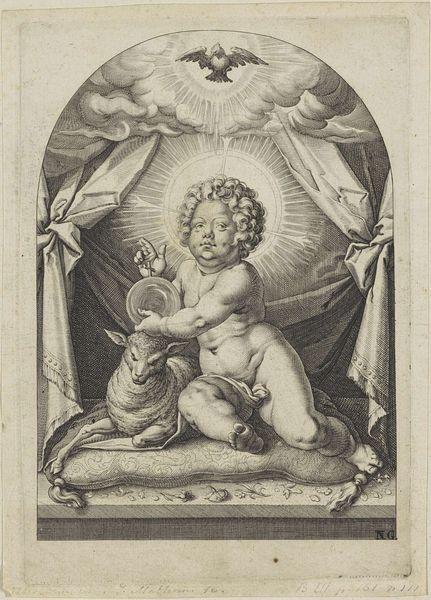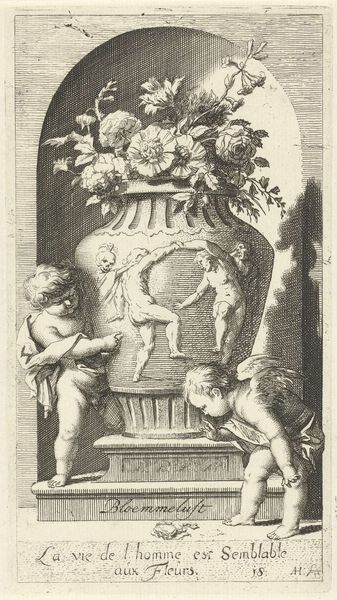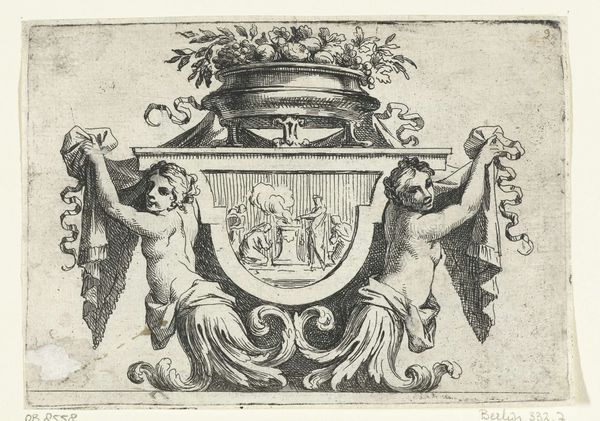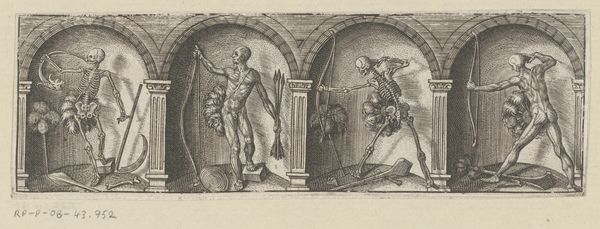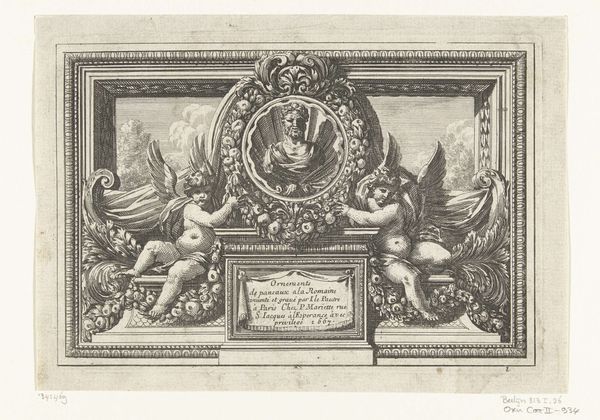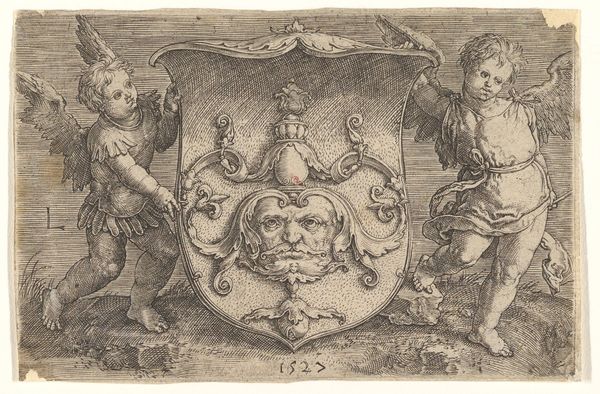
Two Genii Sitting at the Base of a Column (section from The Forge of the Heart) 1529
0:00
0:00
Dimensions: 1 5/8 × 3 5/16 in. (4.13 × 8.41 cm) (sheet)
Copyright: Public Domain
Editor: Here we have "Two Genii Sitting at the Base of a Column," a 1529 engraving. It gives me a sense of playful ornamentation, with these chubby cherubs lounging around this architectural element. What do you see in this piece? Curator: This engraving offers a fascinating glimpse into Renaissance ideas about knowledge and power. We have these classical figures, but they’re deployed in a decorative, almost whimsical way. Considering the rise of humanism at the time, and how classical imagery was used to legitimize political and social power, how do you read the role of these figures and their relation to this column? Editor: I suppose I see them more as symbolic figures in contrast with the architectural grandeur, maybe like stand-ins for the artists themselves as they literally supported and are subordinate to something far larger. I'm intrigued by their instruments. Curator: Exactly. The presence of those cupid figures can lead to thinking about art’s patronage as a social framework: How do you see their youthful character, contrasting with that monumental architecture? Might that juxtaposition of classical motifs and these plump, seemingly non-functional putti be commenting on the role of art as more decorative than useful at this historical moment? Editor: I never thought of them in connection with Renaissance ideas of patronage. So, these seemingly innocuous cherubs carry more weight than initially meets the eye. It kind of shifts my entire understanding from visual aesthetic to commentary. Curator: It is an entry point for understanding how social power and classical ideals are constructed through visual culture. Even seemingly "decorative" elements play a crucial role in solidifying those Renaissance structures and modes of operation. Editor: I appreciate how this highlights that seemingly decorative elements can reinforce underlying social structures. Curator: Precisely. Now, think of the women and men, largely anonymous, who created these Renaissance prints... and who benefited from their distribution and influence.
Comments
No comments
Be the first to comment and join the conversation on the ultimate creative platform.

